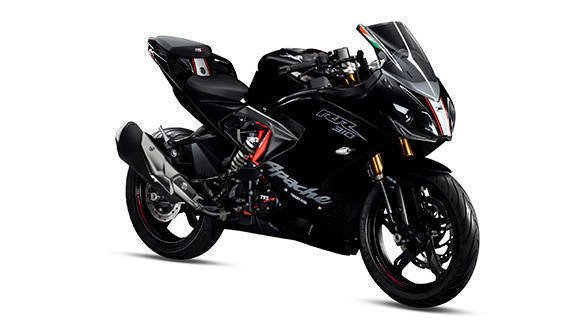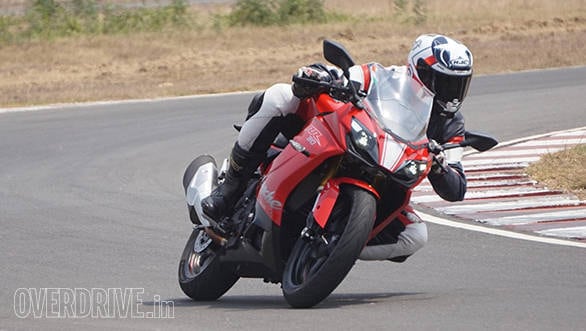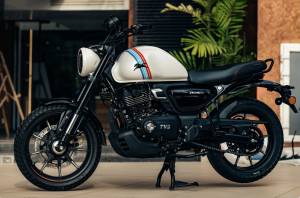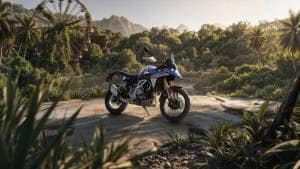2019 Apache RR 310 first ride review
There were high hopes when TVS launched the Apache RR 310 over a year ago. Fruit of its JV with BMW Motorrad, the RR 310 was more than just the faired version of the BMW G 310 R. TVS, after all had put in massive effort to develop its own ECU and streamline the aerodynamics for its first stab at the premium segment. While it is a good product that's also been built quite well; a year spent in our long-term test fleet tells us, there were a few niggles and issues that needed to be addressed. And that's essentially what the 2019 Apache RR 310 is all about.

What new?
Before I get to that, let's set one thing clear. The changes are incremental yet crucial in enhancing the riding experience. To begin with, the bodywork is identical to last year's model and so are most of the decals. The only addition is the RR 310 sticker on the rear cowl and an RT slipper clutch badge at the lower end of the fairing. The RR 310 continues to remain a good-looking motorcycle and its proportions belie the size of motor hidden underneath.
For 2019, the Apache also gets a gloss black (called Phantom Black) paint scheme with white and red stripes. It looks far less inconspicuous than the dull, matte black option. Personally, I like this gloss black treatment, however, the Red RR 310 remains my choice.
One of the biggest peeves about the RR 310 was the crude vibrations that the rider would feel in the bars, around the fuel tank in the pegs. To address this, TVS has replaced the existing handlebar weights with a longer and fatter unit. These go a long way in dampening the vibrations. Plus, there's a rubber beading between the visor and the plastic surrounding the vertical instrument panel that helps reduce vibrations and consequently rattling noises. In fact, TVS has gone the whole hog and also fitted a new chain roller to reduce chain noise.

The biggest and most important addition, however, is the new slip and assist clutch. A slipper clutch, essentially, eliminates the instances of wheel hop while downshifting aggressively to drop speed. Riders do so to shed speed quickly whether on the race track or on canyon roads and with a regular clutch, the rear tyre will be left squirming for grip. The experienced riders, at this point, may suggest rev matching (blipping the throttle before downshifting) but no matter how skilled the rider is, one cannot match the smooth downshifts that a slipper clutch provides.
Out on the MMRT, I got straight to testing this new piece of equipment and immediately there's a significant improvement in the way the bike can be set up for the corner. While braking for C4, for instance, from 128kmph, the bike remained poised as I downshifted a couple of gears to stay in the powerband at the exit.
So, has the ride experience improved?
The remapped ECU has made the bike a lot less jittery. Previously, the bike would also stall when the revs were close to idle and that was a major irritant in traffic. Thankfully, this has been taken care of.

The vibrations have been quelled to quite an extent and that simply enhances the ride experience. Out on the track, where the engine is revving close to its ceiling, there's a noticeable dip in the buzz at the pegs and handlebars. It's not completely eliminated and given the performance orientation of the motor, you'll have to contend with vibrations.
What about the good parts?
My most favourite bit about the bike is the chassis and the suspension set-up which, thankfully hasn't been tinkered around with. To me, the RR 310's trellis frame is among the most communicative out there, allowing you to have a superb time around the corners. At no point did I feel that there's a flat spot in feedback between the chassis and rider. That said, an area that I wish TVS would've considered improving is the tyres. Don't get me wrong, the Michelin Pilot Streets are good in most situations, whether it's the city or highway. But when you begin pushing the limits, the feedback from the tyres is numb. A set of Metzeler Sportecs (TVS uses them on the race RR 310) or the cheaper Apollo Alpha H1s would've been the ideal set of tyres to extract more from this Apache. If you'd like a bit more focus from your RR 310, I'd strongly recommend you upgrade the tyres.
In the end...
Though the changes are incremental, you do get a sense of the RR 310 evolving as a motorcycle devoid of some of the rough edges that plagued the earlier model. The Apache RR 310, in my books, has always been a fun, all round package and the improvements only take the experience to the next level. It also continues to remain a great learning tool for newbies as its forgiving nature allows one to make mid-corner corrections. For approximately Rs, 3,000 over the outgoing bike, the Apache RR 310 is a lucrative deal.
Starts Rs 2,40,000
313cc
6-Speed
34.00
27.30
-NA-













